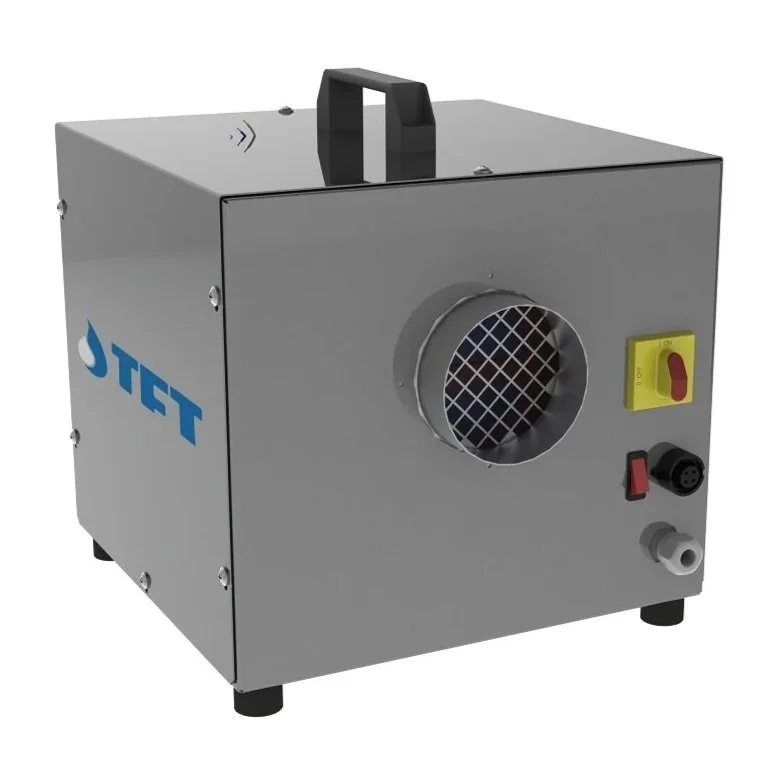When it comes to humidity control in commercial and industrial environments, choosing the right dehumidifier system is essential. At Humiscope, we analyse each client’s needs from temperature and humidity to moisture removal rates so we can design the most effective drying solution for your space.
Why Temperature and Humidity Matter
Temperature and humidity are closely linked, and both directly impact dehumidifier performance. The required room temperature often determines whether a refrigerant or desiccant dehumidifier is the most efficient choice. Selecting the right system ensures optimal performance, energy efficiency, and consistent air quality.
The Two Main Types of Commercial Dehumidifiers
The two main types of dehumidifiers are Desiccant and Refrigerant. If you want a more in depth view - check out our blog ‘Desiccant vs Refrigerant Dehumidifiers’.
1. Refrigerant (Mechanical) Dehumidifiers
Refrigerant dehumidifiers work by cooling humid air below its dew point, allowing moisture to condense and drain away. The air is then reheated and returned to the space, creating a drier environment.
Best for:
Warm, humid conditions (above 20°C)
Relative humidity above 40% RH
Applications such as indoor pools, process areas, cellars and general commercial use
Refrigerant systems are energy-efficient in warm environments but can ice up in cooler conditions, reducing their effectiveness.
2. Desiccant (Adsorption) Dehumidifiers
Desiccant dehumidifiers use a rotating desiccant wheel, typically containing silica gel, to adsorb moisture from the air. Heated regeneration air then removes the collected moisture and expels it outside, allowing continuous operation even in cold or dry environments.
Best for:
Cool, low-humidity and low dew point environments
Cold storage, pharmaceutical, lithium battery manufacturing and food processing applications
Industrial drying processes
This process naturally generates heat - which may require pre- or post-cooling to maintain temperature balance.
Understanding the Science of Humidity Extraction
Both dehumidifier types remove moisture by converting water vapour into liquid, a process that releases heat. Effective thermal management is crucial for maintaining stable conditions and maximising efficiency.
At Humiscope, our engineers assess both heat load and moisture removal requirements to deliver precision humidity control across all temperature ranges.
Check out this page showing a more in-depth view of how each system works and the differences between these two dehumidifier types >
| Feature | Refrigerants | Desiccants |
|---|---|---|
| Best for | Warm, humid | Cool, low-humidity |
| Operating Temp Range | > 20°C | -20°C to +30°C |
| Humidity Range | > 40% RH | > 0.1% RH |
| Heat Output | Moderate | High |
| Energy Efficiency | Higher at warm temps | Higher at low temps |
| Applications | Indoor pools, general use | Cold storage, pharmaceuticals |
The Humiscope Approach to Humidity Control
Selecting the right dehumidifier isn’t just about picking a product, it’s about engineering a complete humidity control system.
Our experts consider temperature, humidity, and energy efficiency needs to deliver reliable, long-term performance.
To select the right system we also look at
Indoor temperature
Current indoor humidity
Target humidity level
Dimensions of the space needing climate control
What the space is being used for
What is the door activity (how often does the door get opened/closed, left open)?
Is there fresh air being added (fan) or removed (extract fan)?
How many occupants in the room?
When in doubt, consult a specialist in industrial and commercial dehumidification systems. At Humiscope, we provide detailed heat gain calculations and system recommendations to ensure you achieve your target environmental conditions.
Speak With a Humidity Control Specialist
Looking for the right dehumidifier solution for your facility?
Contact Humiscope to discuss your specific drying, dehumidification, and climate control requirements.




